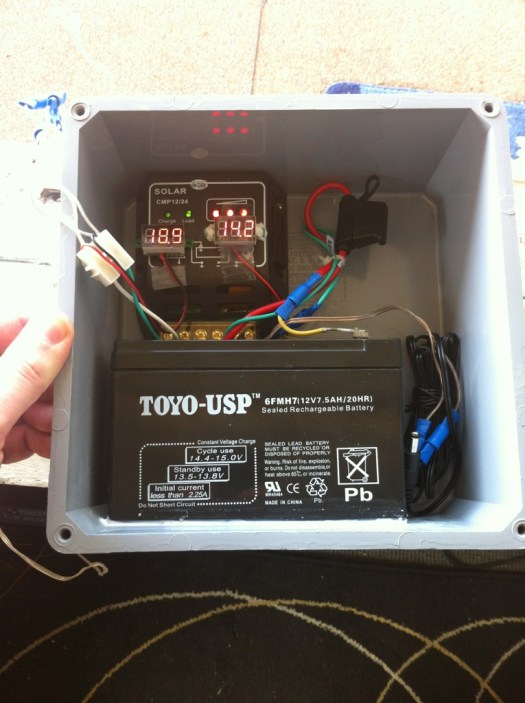See the original How to Build a Solar Powered Linksys Router article: https://lagunabeachcomputer.com/solar-powered-linksys-wrt54g-router-w-dd-wrt-and-hotspotsystem/
Solar Powered Linksys WRT54g Router w DD-wrt and HotSpotSystem
I have built a solar powered Linksys WRT54g router setup.
1. WRT54g router 12v 1a with DDwrt v24 and HotSpotSystem.com ($20 ebay)
2. 10amp solar charger controller 12v ($10 ebay)
3. 2x 10watt solar panels 12v ($22 each ebay)
4. 1.4 Ah 12v battery ($16 Frys)
5. 20dB gain Yagi directional antenna ($10 ebay)
6. Reverse RP-TNC male to RP-SMA female adapter ($2 ebay)
7. (will purchase waterproof box) $10 or similar
RESULTS:
Works perfectly but needs a bigger battery. The 1.4Ah 12v sealed battery only lasts about 2 hours when the charge stops. I read somewhere that a 7.2Ah battery should work, which makes sense if I want to get roughly 7x more power time (if 1.4Ah=2hours then 7.2Ah should equal about 10 hours…)
The solar charge controller is awesome! Each panel puts out about 15-18v in medium cloudy sunlight at about 0.6amps each. The controller charges the battery to about 13.8v, then automatically switches to a float charge to about 14.1v. After full charge I could disconnect 1 panel and still maintain power to the router and a positive charge to the battery.
The panels are chinese 10Watt models from ebay. They seem to be pretty good, as it does not take much sunlight to generate 12-14v (in the medium shade). They will easily produce 18v each in full direct sunlight.
The Yagi is a 20 or 24 dB gain directional with a 30 degree cone spread signal. Haven’t done any testing as I am still in crutches after knee surgery and don’t want to go across the street and walk around.
Update:
Here is the 7.5 AH 12volt battery installed. The unit will power the WRT54G router for well over 8 hours. I put the whole thing in a waterproof box, however I am planning on drilling some holes for PVC pipes to vent and to affix the antennas to.
I found this cool Solar Powered Brewery bottlecap and decided it was perfect for a heatsink. So I glued it onto the main Broadcom chip for some heat dispersion.
Bottlecap heatsink on WRT54G router.
Installed in waterproof box. Must provide ventilation. Using stock antennas until the RP-TNC and RP-BNC adapters come in the mail.
Setup in action on a sunny day.
UPDATE:
I have put together an Arduino Solar Panel Sun Tracker. Check out the code and project page!












